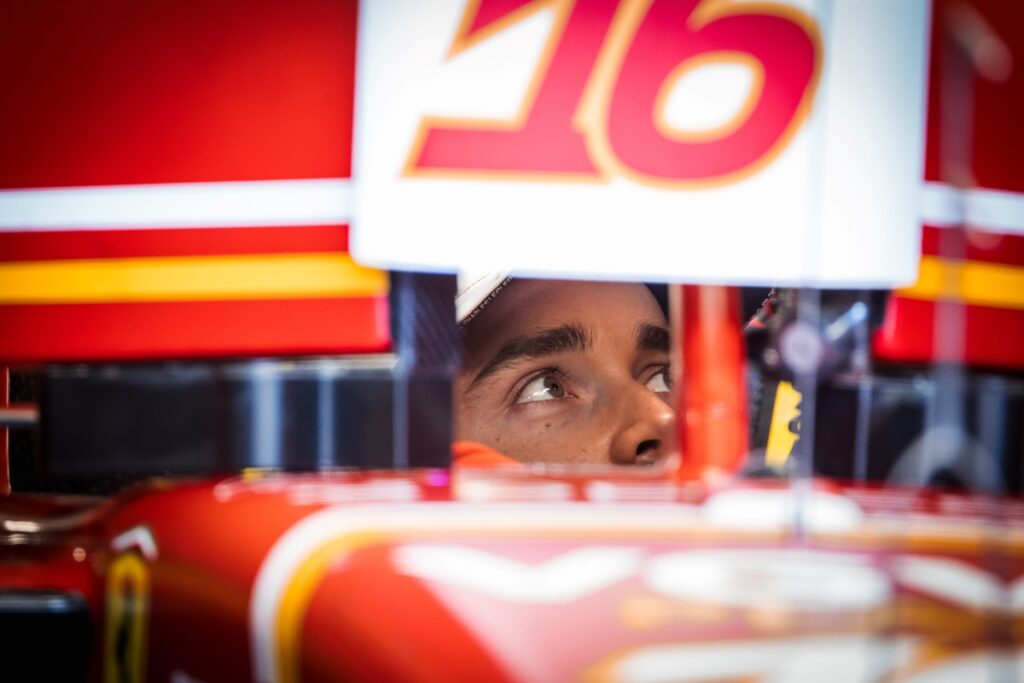Ferrari's Secret Weapon: How They Plan to Fix Their Power Strategy Deficit

In the high-stakes world of Formula 1, even the smallest details can make or break a race weekend. For Ferrari, this was starkly evident at the recent Emilia Romagna Grand Prix. Charles Leclerc, piloting his SF-24, topped the practice sessions showing immense promise. However, the weekend took a downturn during qualifying, highlighting a significant strategic gap between Ferrari and rivals Red Bull and McLaren.
 Ferrari SF-24. 23.05.2024. Formula 1 World Championship, Rd 8, Monaco Grand Prix, Monte Carlo, Monaco, Preparation Day">
Ferrari SF-24. 23.05.2024. Formula 1 World Championship, Rd 8, Monaco Grand Prix, Monte Carlo, Monaco, Preparation Day">
The data analytics painted a clear picture: Ferrari’s main time loss occurred in the first sector, particularly on the extended run towards Tamburello. Despite Leclerc’s prowess and a promising grid position, both he and his teammate Carlos Sainz found themselves outpaced by Red Bull’s Max Verstappen and the McLaren duo. The key issue? A strategic error in power deployment.
The Sector One Conundrum
Leclerc himself shed light on the critical problem affecting their qualifying performance. ‘Re-analysing qualifying, I think we basically lost everything at the launch,’ he explained. ‘For some reason, we had a different power strategy compared to McLaren and Red Bull, and we lost everything on the run down to Turn 2. Max, on top of that, had the slipstream.’
In modern F1, power management and aerodynamic efficiency are crucial. Ferrari’s approach to these aspects evidently lagged behind their competitors, leading to a missed opportunity for securing pole position. Though Leclerc managed to convert a third-place start into a strong race finish, the underlying issues were too glaring to ignore.
Addressing the Issue
Leclerc and Ferrari are not ones to rest on their laurels. The team has undertaken a thorough re-evaluation of their performance, delving into the intricacies of their power strategy. Notably, this problem isn’t new. Leclerc hinted that similar issues were present in earlier rounds of the season, but the recent race at Imola has spurred a more concentrated effort to find solutions.
‘We’ve looked into it. I don’t think that here [Monaco] it will make such a difference. It’s a very different situation we are in,’ he noted. The unique street circuit of Monaco, with its shorter run to the first turn, presents less of a challenge in terms of straight-line speed. However, Leclerc emphasizes that this doesn’t mean the issue can be ignored for the remainder of the season.
‘It can [make a difference] for the rest of the season. So we’ve done a proper analysis on our side and I’m sure we’ll grow from that,’ said Leclerc, maintaining an optimistic outlook.
Future Prospects and Strategy Refinements
Ferrari’s race engineering team is well aware that addressing this power strategy deficit is critical for maintaining competitiveness throughout the season. The need for adaptability and real-time strategy adjustment has never been more apparent. As teams continue to develop their cars and optimize for race conditions, staying dynamic and responsive becomes paramount.
While the hiccup at Imola was a setback, it offers Ferrari a valuable learning experience. By identifying shortcomings and working on swift corrections, the team aims to reclaim their standing as one of the front-runners. The focus will be on refining energy deployment tactics, enhancing aerodynamic performance, and ensuring that such lapses don't reoccur.
The next races will undoubtedly test Ferrari’s resilience and their ability to implement these changes effectively. With races at high-speed circuits on the horizon, getting the power strategy right will be crucial for maximizing performance and securing podium finishes.
In conclusion, Ferrari’s acknowledgment of their power strategy shortfall and their commitment to resolving it highlight the continual evolution that characterizes Formula 1. As the Prancing Horse gears up for the challenges ahead, fans and competitors alike will be watching keenly to see if they can transform their insight into on-track success.